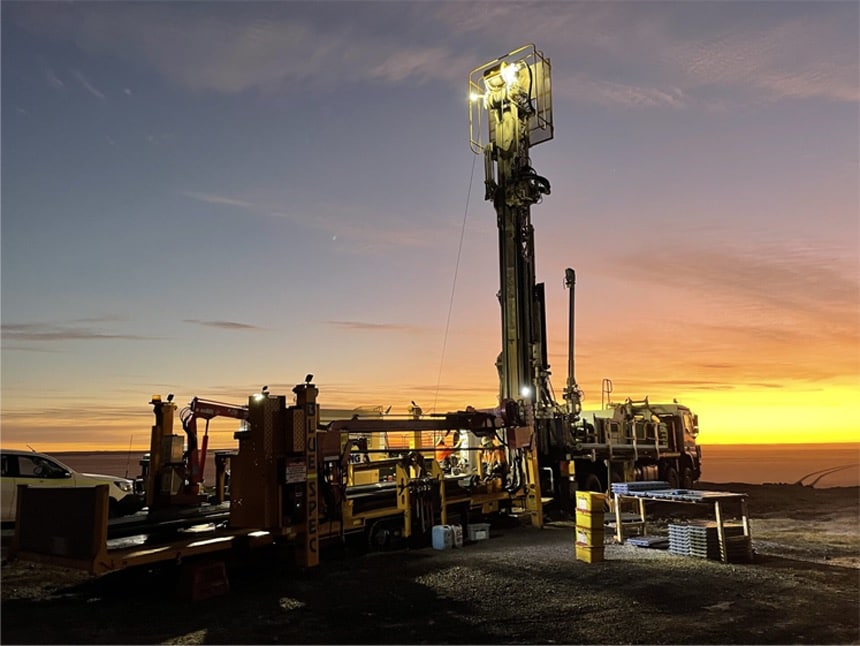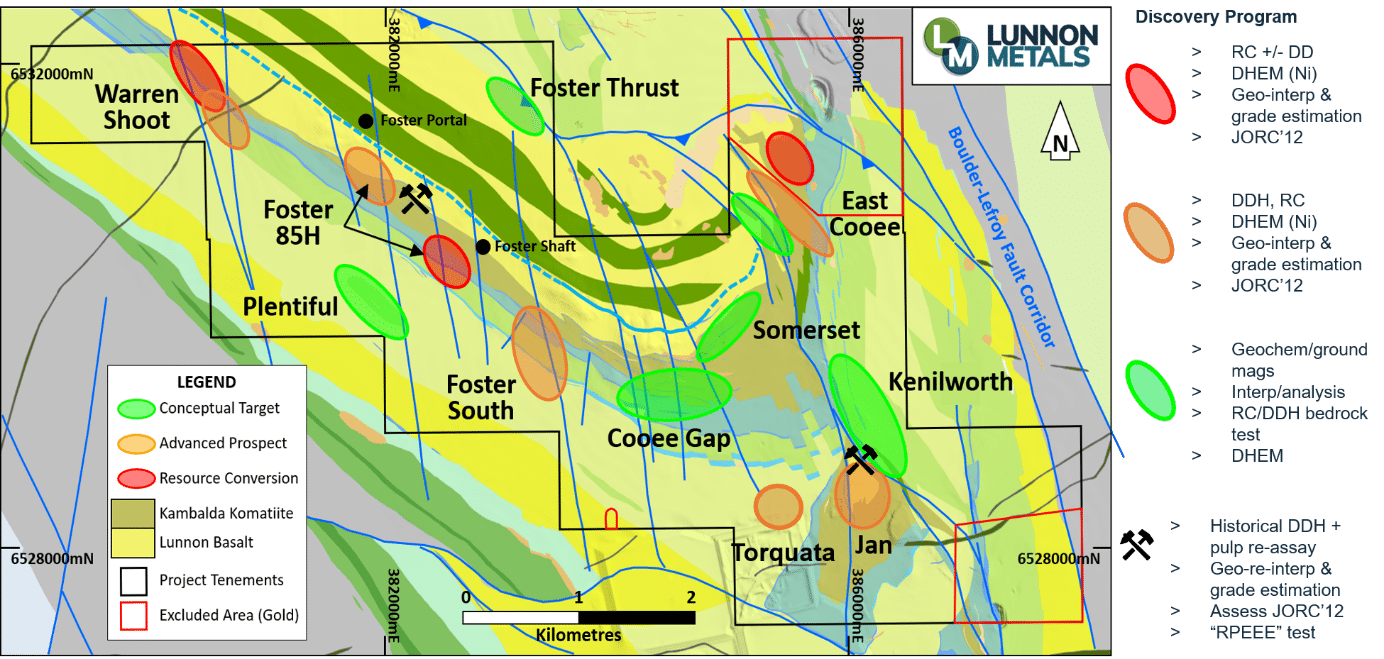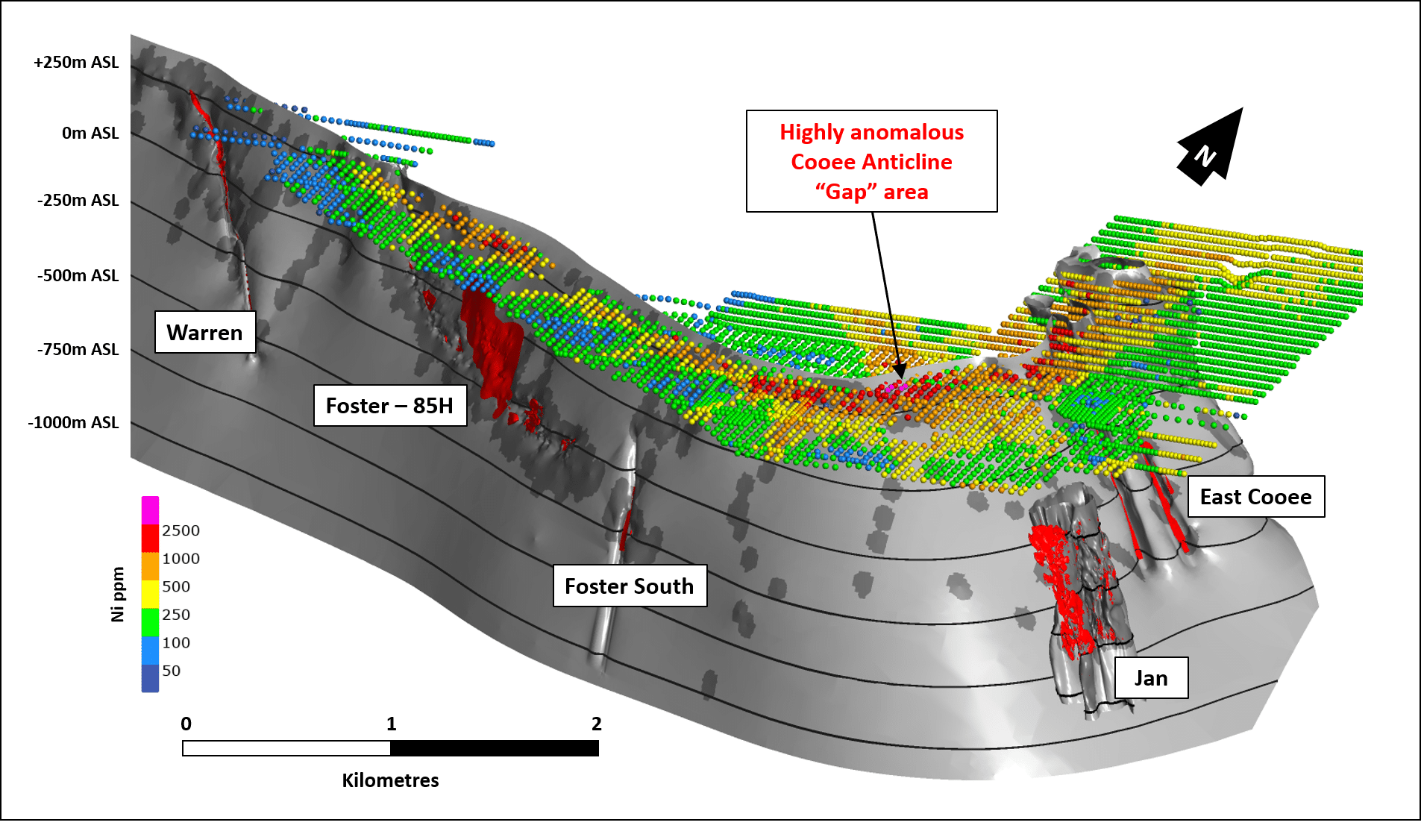

Nickel Exploration
Exploration Strategy
Lunnon Metals’ exploration programme, detailed in its Prospectus at the time of listing in June 2021, included a portfolio of high ranking nickel targets developed in the time preceding IPO when the company was in a private Joint Venture with its now major shareholder, Gold Fields – St Ives. The portfolio included a range of target types and risk, from low risk resource extension right through to high risk-high reward conceptual targets. The programme commenced on ground with RC drilling in late July 2021, with diamond drilling commencing in the following month. As at the end of the September quarter, all first phase nickel RC programme had been completed with some 9,000 metres drilled. Assay results had been received representing approximately 2,700 metres of drilling.
Phase 2

Plan View of Kambalda Nickel Project highlighting location of named Exploration Targets
Phase 2 follow up programmes, where warranted by phase 1 results and the outcome of any Down Hole Transient Electro-Magnetic surveys (“DHTEM”), will occur throughout the rest of 2021 and into 2022. RC drilling will continue to test these targets down to a maximum depth of 300 metres. Deeper targets that can not be accessed in the future from the Foster mine workings (once dewatered), will be tested with diamond drilling. Deep diamond holes are currently being planned for Jan Deeps and at the Kenilworth target, a Western Australian Government Exploration Incentive Scheme (“EIS”) drill hole that will reach a depth of up to 1,450 metres testing both conceptual nickel and gold targets in an anomalous magnetic “high”.
Deeper parts of the Warren trough system, whilst connected tot he Foster mine by a separate decline, do not lend themselves to future underground diamond drill testing as a result of very poor angles geenrated by attempting to drill from existing infrastructure. Accordingly, these Warren targets will also be tested by surface deep diamond drilling n both 2021 and 2022.
The location of nickel and gold targets is diagrammatically represented in the following summary image. The

Cooee Anticline – Somerset – Cooee “Gap”
The Company’s re-interpretation of the litho-structural setting across the KNP area indicates there is potential for further, previously unidentified, troughs in the Cooee Anticline area, with targets now named “Cooee Gap” and “Somerset”. The prospectivity of this area is highlighted by the following observations:

The Company’s current interpretation indicates that there are significant expanses of the key target nickel contact positioned directly below this highly anomalous Cooee Anticline area and it thus ranks highly and will be aggressively explored, initially with strategically placed “framework” drill holes to better refine the 3D geological model.